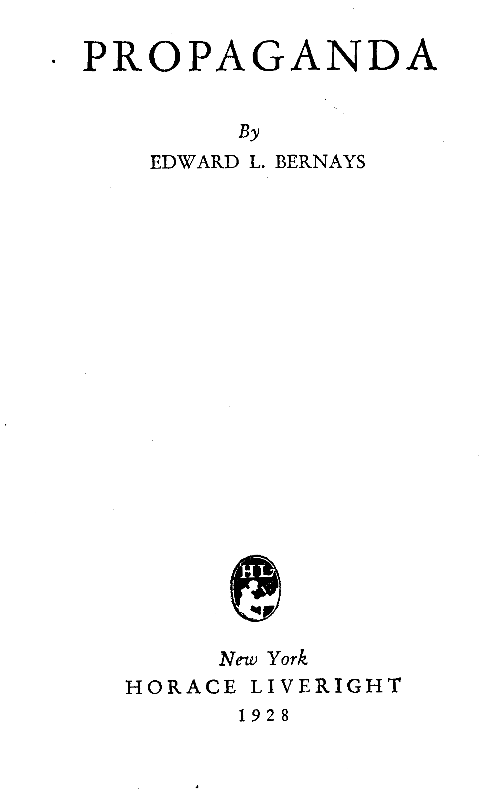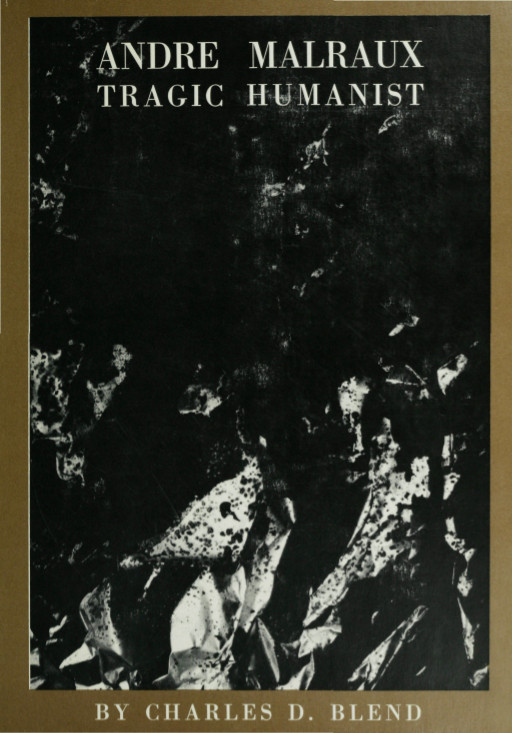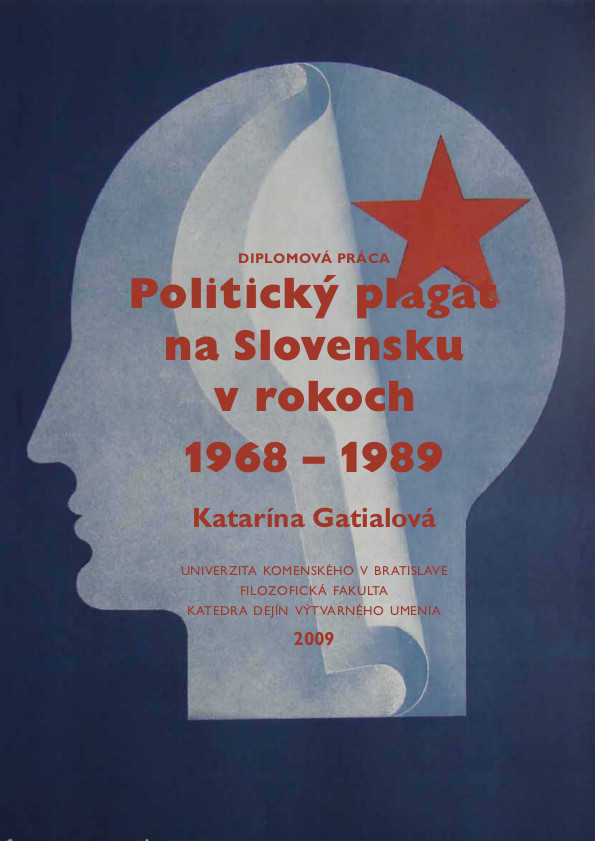Edward L. Bernays: Propaganda (1928)
Filed under book | Tags: · advertising, art, business, democracy, education, marketing, politics, propaganda, psychology, public relations, science

A seminal and controversial figure in the history of political thought and public relations, Edward Bernays (1891–1995), pioneered the scientific technique of shaping and manipulating public opinion, which he famously dubbed “engineering of consent.” During World War I, he was an integral part of the U.S. Committee on Public Information (CPI), a powerful propaganda apparatus that was mobilized to package, advertise and sell the war to the American people as one that would “Make the World Safe for Democracy.” The CPI would become the blueprint in which marketing strategies for future wars would be based upon.
Bernays applied the techniques he had learned in the CPI and, incorporating some of the ideas of Walter Lipmann, became an outspoken proponent of propaganda as a tool for democratic and corporate manipulation of the population. His 1928 bombshell Propaganda lays out his eerily prescient vision for using propaganda to regiment the collective mind in a variety of areas, including government, politics, art, science and education. To read this book today is to frightfully comprehend what our contemporary institutions of government and business have become in regards to organized manipulation of the masses.
Publisher Horace Liveright, New York, 1928
159 pages
The Century Of The Self: One: Happiness Machines (documentary film by Adam Curtis featuring Edward Bernays)
PDF (no OCR)
View online (HTML)
Charles D. Blend: André Malraux: Tragic Humanist (1963)
Filed under book | Tags: · art, biography, communism, humanism, poetry, politics

“The dominant question arising from the unparalleled inhumanity of the mid-twentieth century, André Malraux has suggested “Is man dead?” Yet, for him, to pose the question is to answer it, for man proves his greatness, not by affirming it, but by questioning. It is by a mise en question of the universe that man rises above it.
This interpretation, long central to Malraux’s thinking, brings with it a number of difficulties. Previous concepts of man have produced an image, an ideal, toward which man could orient himself, and have presupposed a culture that had a role in the scheme of things. With a vision of man based on questioning rather than affirmation, it becomes impossible to preconceive an image of him or to visualize a form for human culture, and traditional humanism passes from the picture.
For Malraux, however, man has something that is greater than a preconceived image of himself: consciousness or awareness. To replace the images of man that have been destroyed or invalidated, Malraux calls for the will to grasp the greatest possible consciousness of what it is to be a man, coupled with the will to absolutely free discovery. Combining these values, Malraux suggests, produces a culture that is a human adventure, an advehture in freedom. Humanism is still possible, but it is a tragic humanism—humanism, because man knows his will and his starting point; tragic, because he can never know where he is going. Man can lead a dignified and fruitful existence given the will to struggle endlessly with the unknown.”
Publisher Ohio State University Press, 1963
255 pages
Katarína Gatialová: Politický plagát na Slovensku v rokoch 1968 – 1989 (2009) [Slovak]
Filed under thesis | Tags: · 1960s, 1970s, 1980s, art history, graphic design, ideology, politics, propaganda, slovakia, totalitarianism

“Politický plagát na Slovensku v období 70. a 80. rokov 20. storočia patrí spolu s ďalšími prejavmi oficiálneho umenia k sporným bodom našej kultúrnej histórie. Plagáty, produkované a podporované oficiálnou štátnou politikou, boli jednou z vizuálnych dominánt tejto doby, avšak bez výraznejšieho agitačného vplyvu na väčšinu obyvateľstva. Charakteristické znaky a symbolika angažovanej plagátovej tvorby, ale tiež jej obsahová „vyprázdnenosť“, zrkadlia obdobie svojho vzniku. Plagáty boli exponovanou oficiálnou maskou režimu. Dobová nadprodukcia politických plagátov počas normalizácie spôsobila ich výtvarnú aj obsahovú devalváciu. V súčasnosti sa tento okruh prác dá považovať za definitívne uzavretý, bez autentického pokračovania alebo priameho dosahu na dnešnú výtvarnú tvorbu. Ideologické pozadie politických plagátov však spôsobilo na jednej strane neskorší nezáujem, až odpor voči danej problematike, na druhej strane nejasnosti a skreslenie informácií o tomto druhu tvorby. Dnešná kunsthistória takmer ignoruje angažované plagáty obdobia 70. a 80. rokov. Názor širšej verejnosti závisí do znaènej miery od veku. Predstavitelia staršej generácie, ktorí mali možnosť stretávať sa vo svojom každodennom živote v predprevratovom období s týmito artefaktmi, nedokážu zaujať neutrálne stanovisko a negatívne hodnotia problematiku ako celok. Predstavitelia mladšej generácie, ktorí skúmané obdobie osobne nezažili, prípadne len v ranom detstve, vnímajú tieto diela oficiálnej kultúry nezaťažene a veľmi pozitívne. Dostupné informácie sú však obmedzené, názory mladých ľudí sú preto mnohokrát deformované populárnymi výstupmi na túto tému. Politické plagáty sa spolu s ďalšími prejavmi propagandy a oficiálnej kultúry minulého režimu stali často len akousi zábavnou kuriozitou. Názory na tematiku politických plagátov teda oscilujú medzi dvoma krajnými bodmi – tzv. ostalgickým obdivom a jej radikálnym odsúdením. V tejto diplomovej práci sa pokúsim odpútať sa od oboch vyhranených názorových polôh, mojou snahou bude pozrieť sa na angažované plagáty 70. a 80. rokov 20. storočia bez predsudkov a uvažovať o nich z čo najväčšieho nadhľadu.”
Master thesis
Art History Dept, Faculty of Philosophy, Comenius University in Bratislava, 2009
Supervisor: Alexandra Kusá
159 pages
video lecture (Public Face of Power, Communist Propaganda Posters from Czechoslovakia and Central Europe in the Second Half of the 20th Century) [English]
Comment (0)
